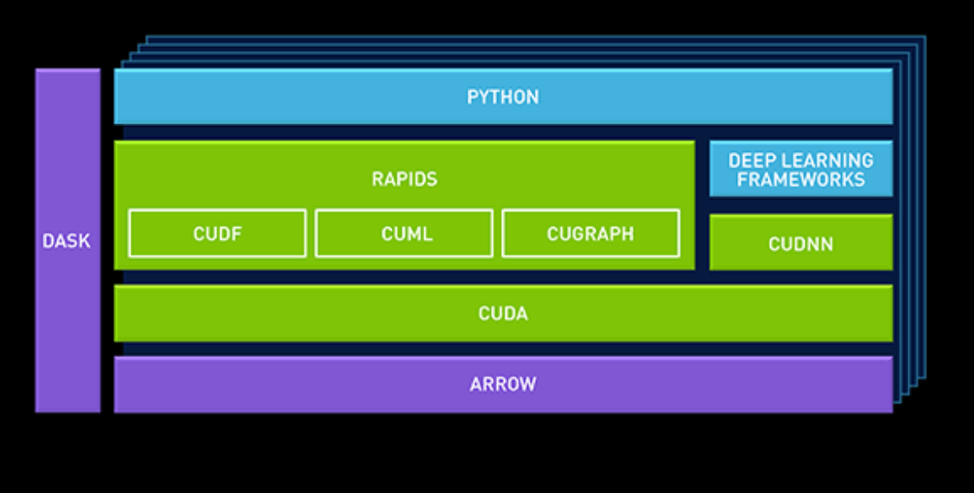What does NVIDIA’s Rapids platform mean for the Data Science community?


Today NVIDIA announced the launch of the RAPIDS suite of software libraries to enables GPU acceleration for data science workflows and we’re excited to partner with NVIDIA to bring GPU accelerated open source technology for the machine learning and AI community.
“Machine learning is transforming businesses and NVIDIA GPUs are speeding them up. With the support of the open source communities and customers, H2O.ai made machine learning on GPUs mainstream and won recognition as a leader in data science and machine learning platforms by Gartner. NVIDIA’s support of the GPU machine learning community with RAPIDS, its open-source data science libraries, is a timely effort to grow the GPU data science ecosystem and an endorsement of our common mission to bring AI to the data center. Thanks to our partnership, H2O Driverless AI powered by NVIDIA GPUs has been on an exponential adoption curve — making AI faster, cheaper and easier.” – Sri Ambati, CEO and Founder, H2O.ai
Let’s look at the announcement in a bit more detail. The new software stack sets out to accelerate the entire workflow of data science and analytics by focusing on three building blocks


• DataFrame – cuDF – This is a dataframe-manipulation library based on Apache Arrow that accelerates loading, filtering, and manipulation of data for model training data preparation. The Python bindings of the core-accelerated CUDA DataFrame manipulation primitives mirror the Pandas interface for seamless onboarding of Pandas users.
• Machine Learning Libraries – cuML – This collection of GPU-accelerated machine learning libraries will eventually provide GPU versions of all machine learning algorithms available in Scikit-Learn.
• Graph Analytics Libraries – cuGRAPH – This is a framework and collection of graph analytics libraries
A lot of the other packages in the architecture diagram have already been out there for a while, but this new announcement brings them all together with a promise of integration, ease of installation and use. cuDNN and cuGraph (previously called nvGRAPH) especially are very popular and are used by many developers. NVIDIA’s linear algebra & math libraries which include primitives like cuBLAS, CUDA Math Library, and others are used by many different frameworks as the building blocks including by us here at H2O.ai
H2O.ai is committed to accelerating automatic machine learning on NVIDIA GPUs. It was nearly a year ago, H2O.ai for the first time in the industry demonstrated that statistical machine learning algorithms can be accelerated with GPUs with our H2O4GPU (Github ) package. This now powers our pathbreaking commercial offering, Driverless AI, that brings Automatic Machine Learning for the Enterprise. As a major contributor to XGBoost GPU and a leader in AI and ML, we are pleased to see the development of Rapids and we hope to see more open source development for GPU accelerated machine learning.
The new announcements around cuDF and cuML are the successors to the GOAI project, of which H2O.ai was a founding member. As the open source leader in AI and ML, we love that NVidia is contributing new technology for the AI community. The two key developments here are the adoption of the Apache Arrow framework as standard data structure across all the different libraries. This allows for easy integration with the growing ecosystem that now supports Arrow. The second one is around the Python bindings for cuDF that mimic Apache Pandas interface. This can potentially accelerate data munging and transformation by an order of magnitude.
We are pleased to see NVIDIA embrace Data Science & Machine Learning which validates our core mission and vision that we’ve been driving for 7 years. We believe that machine learning will be the key part of any company’s AI Strategy and Transformation. We look forward to contributing to the Rapids project with our best of breed open source algorithms and use the underlying libraries in our Driverless AI enterprise platform.





